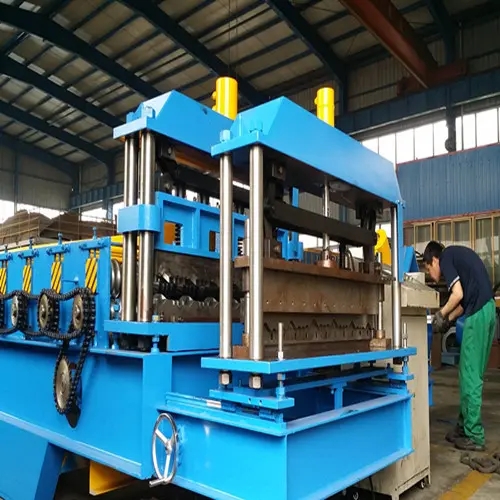
Cold Roll Forming Machines An Overview of Other Applications
Cold roll forming is a manufacturing process that is used to create products from metal sheets or coils by shaping them through a series of rollers without the need for heating. This efficient production technique has gained popularity in various industries due to its ability to produce consistent and high-quality components with minimal waste. While many may associate cold roll forming machines with traditional applications, such as steel framing and roofing, they are also utilized in a wide range of other sectors, highlighting their versatility and efficiency.
One of the significant applications of cold roll forming machines beyond conventional uses is in the automotive industry. In this sector, these machines are employed to produce various components, including chassis parts, brackets, and reinforcements. The cold roll forming process allows for the manufacture of lightweight yet strong parts that meet stringent safety and performance standards. Additionally, the ability to produce complex shapes with precise dimensions facilitates the assembly process, reducing both time and labor costs in automobile production.
Cold Roll Forming Machines An Overview of Other Applications
The electrical and electronics industry also benefits from the utilization of cold roll forming machines. These machines are adept at producing cable trays, conduits, and various enclosures that are crucial for organizing and protecting electrical wiring. The ability to create intricate designs with high precision ensures that these components not only fulfill their functional roles but also meet aesthetic demands in contemporary installations.

Moreover, the agricultural sector employs cold roll forming technology to produce components for machinery, such as frames and brackets. As agricultural equipment becomes increasingly specialized and sophisticated, the demand for precision-engineered parts is growing. Cold roll forming machines can cater to this need by producing bespoke components with reduced lead times, thereby enhancing the overall efficiency of agricultural operations.
In addition to these applications, cold roll forming machines are ideal for producing products in the furniture industry. Many furniture designers and manufacturers utilize this technology to create metal frames and supports for chairs, tables, and shelving units. The cold forming process also allows for the combination of different materials, providing greater design flexibility and aesthetic appeal.
One of the standout advantages of cold roll forming machines is their ability to produce long lengths of consistently shaped products with minimal setup time. This capability not only reduces production costs but also allows manufacturers to respond more quickly to market demands. Additionally, the process generates less scrap material compared to traditional metalworking techniques, making it a more environmentally friendly option.
In conclusion, cold roll forming machines serve a crucial role in various industries beyond their traditional applications. From automotive components to agricultural machinery and furniture production, the versatility of these machines demonstrates their vital contribution to modern manufacturing. As technology continues to evolve, the potential for cold roll forming is likely to expand, opening doors for new applications and innovations across diverse fields. As manufacturers seek efficiency, quality, and sustainability, cold roll forming machines will continue to be at the forefront of industrial production.